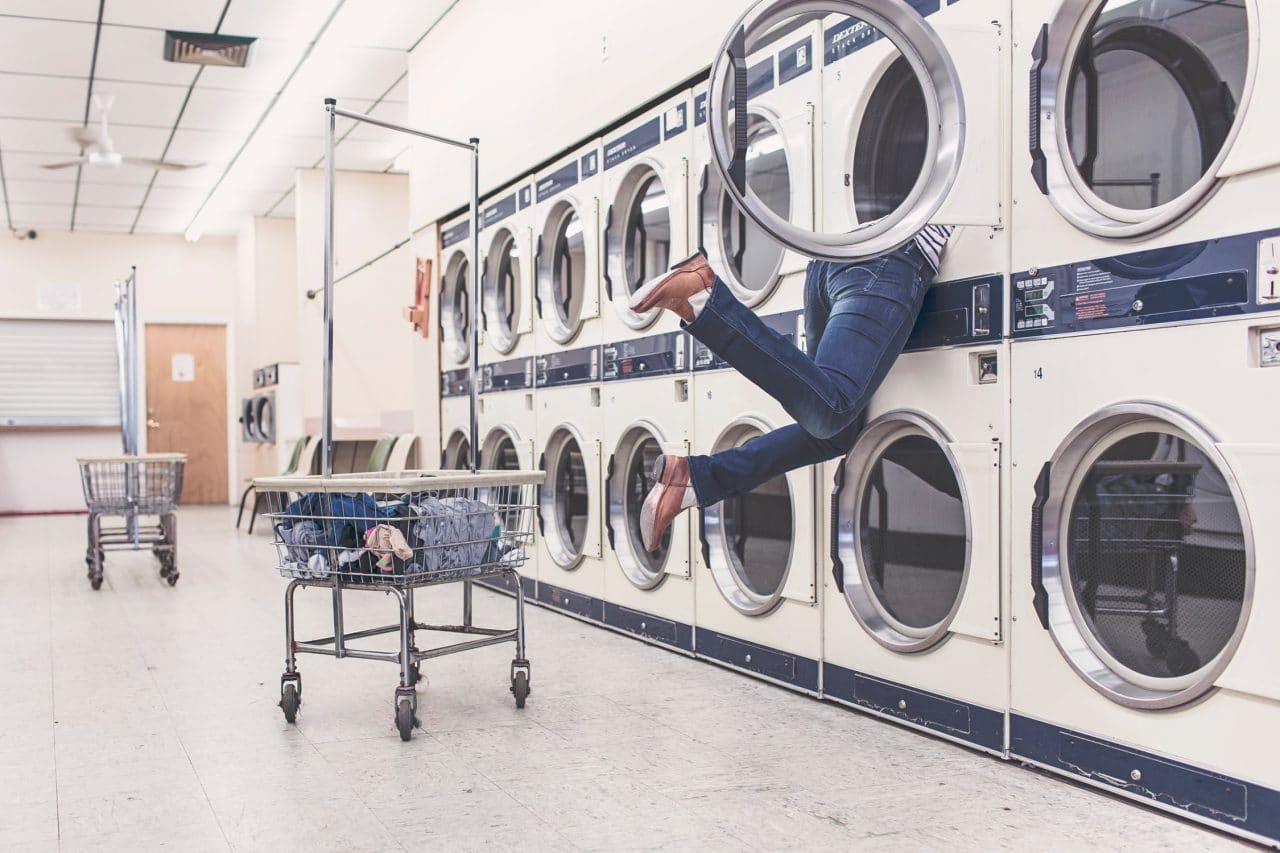According to a survey conducted by Proctor & Gamble, the average American family does between 300 to 390 loads of laundry each year. Companies that make washers and dryers have been working for many years to create systems that are as energy efficient as possible.
Laundry is a necessary chore, and with the growing interest in green products and reducing carbon footprints, consumers have embraced washers and dryers that are energy efficient. Models that have an ENERGY STAR rating are designed with a more substantial tub, so fewer loads are needed to clean more laundry, and they all have a specific design that ensures less water is used to wash clothes. Here are some facts about energy efficient machines:
- If all laundry systems were energy efficient, annual greenhouse gas emissions would be reduced by 19 billion pounds.
- ENERGY STAR rated machines use less electricity and can save people money on their utility bills.
- Washing machines that are environmentally friendly use 10 gallons less water than standard machines.
Here’s a look at some laundry tips for increasing energy efficiency no matter what type of system you have.
Energy-Efficient Laundry Tips
Whether you have a new washer and dryer, or you just want to reduce the energy you use for your laundry, the two most important ways to reduce energy is to use colder water and to use less water. In most cases, people overuse the warm and hot water in their laundry, and a lot of times it isn’t necessary.
Most laundry can be washed on cold or warm unless you are dealing with stains from oil. A lot of people don’t realize the fact that clothes don’t need to be washed on hot to get rid of germs or stains. Instead, using cold water most of the time can reduce the energy you use in half. Here are some of the best ways you can make your laundry habits more energy efficient.
1. Use a detergent designed for cold water.
By using detergents that are designed for cold water and washing your clothes on the cold-water setting, you will significantly decrease the energy used for your laundry.
2. Use the correct amount of water for your laundry.
Many people do not adjust their settings between laundry, but it is more earth-conscious to match water levels to the amount of laundry you have. The most energy-efficient laundry practice is to attempt to wash and then dry full loads as much as possible. If you need to clean a small load, it is essential to change the water setting, so you don’t waste water.
3. Separate your clothes
Some people sort their laundry meticulously, while others throw everything in together. If you are trying to reduce the amount of energy you use, make sure to dry your heavier clothes separately from any of your lighter-weight fabrics.
4. Use your moisture sensor, if possible
Most people have forgotten laundry in their dryer and had to run it again to fluff it up before folding and putting away. Over-drying clothes is a standard way people waste energy unnecessarily. You can be more conscious by using your dryer’s moisture sensor if it has one.
5. Clean your lint screen after every load
By cleaning your lint screen after every load is an excellent way to prevent fires and to increase air circulation in the load. Every few months, you can clean out the compartment that holds your lint screen by using the extended nozzle attachment on your vacuum cleaner. Cleaning your lint trap regularly is a helpful way to ensure your dryer is performing optimally.
6. Learn about different cycle options
Many dryers have a cool-down cycle that finishes drying clothes with the heat that remains in the dryer after the heat cycle. Instead of using heat until your clothes are completely dry, save energy by utilizing the heat that you need, but not overusing it.
7. Use a clothesline if you can
Whether you want to hang your clothes on a line outside or inside on a drying rack, if you have the option to naturally dry your clothes, you will be saving a significant amount of energy.
8. Use high-efficiency detergent whenever you can
If you have a high-efficiency machine or a front-loader washer, you can use a detergent that is labeled with an “HE” that indicates it is a high-efficiency detergent. HE detergents disperse the soap quickly and have lower suds than standard soap.
9. Look for ENERGY STAR labels on new machines
When it is time for you to replace your washer and dryer, make a conscious decision to get a new set that has an ENERGY STAR label. Most modern versions of models are energy-efficient, and the ENERGY STAR rating tells you that those particular washing machines use 20 percent less energy and 34 percent less water.
ENERGY STAR dryers also use twenty percent less energy than standard ones. If you are in the market for buying a new machine, look for ones that not only have the high-efficiency ratings but also have a moisture sensor that will shut your machine off when the clothes are dry.
Tips for Finding the Right Energy-Efficient Washer and Dryer for Your Needs

With the trend for high-class and multi-colored washer and dryers with so many different choices, finding the right washer and dryer can feel overwhelming. If you are shopping for a set that is genuinely energy-efficient, there are some washers and dryers that are greener than others and here is a list of what to consider.
1. Let energy efficiency be your guide
There are so many options of washers available from many different companies. It is easy to get drawn into the washers with many features, fun colors, and cool styles. While it is certainly okay to get whatever washer you want, if energy efficiency is what you are looking for, know that bells and whistles or extra features don’t make them more efficient than other models.
There are top loaders and front loaders that are equally as efficient, and the ENERGY STAR numbers will help you determine which model is right for you. If you are interested in getting a top-loading machine, the ones with short central agitators are typically more efficient because they are designed to push clothes down, so less water is needed.
2. Look for performance stats
If you are focused solely on energy-efficiency, you may not think about also looking for the washers that perform best. Performance does matter, and you can find machines that are both green and have high-performance ratings. There are many washers that charge significantly more for good performance, but there are plenty of great models that can meet your needs.
3. Understand what the ratings mean
When you look at the Energy Star rating card, you may see some terms that you have not heard before. Here’s a breakdown of those for you:
- MEF is Modified Energy Factor and the higher the MEF, the more efficient that washer model is.
- WF is Water Factor and it is responsible for measuring the water efficiency by the number of gallons of water that are consumed in every cubic foot. For WF, you want the lowest WF you can find.
- It can be confusing, but you want to look for a washer with a high MEF and a low WF.
4. Dryers are not truly energy efficient
Surprising to some, dryers continue to be more energy efficient than older models; however, dryers are not actually energy efficient. Unfortunately, all models of dryers require the use of heat to make hot air.
If you want to be as green as possible, you can air-dry your clothes. If you do want a dryer, there are some models that are slightly more efficient than others, and plenty of them have new functions that make them worth considering.
Final Thoughts
If you are shopping for an energy efficient washer and dryer, you will quickly discover that there are a large number of choices. While there isn’t a specific washer or dryer that can be labeled as the very best machine, you can be armed with the tools for finding the set that will work best for you.
ENERGY STAR generates a report every year to let people know which washing machines are rated highest for energy efficiency. If you want to shop for yourself, understanding the MEF and WF ratings is essential.
You will find that shopping for a washer and dryer can be a very involved experience; however, there are many machines that can meet your efficiency needs and come with the features you want. Dryers are not necessarily energy efficient, but if you can find a model that has a moisture sensor and will turn off when the clothes are dry, you can save money.
Whether you are in the market for a new machine or not, there are many ways you can increase your energy efficiency. If you follow the steps detailed above, you can make a difference.









